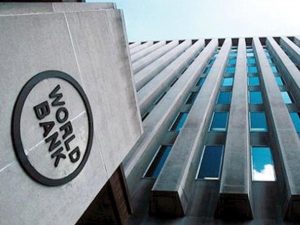Energy prices soared in the third quarter of 2021 and are expected to remain elevated in 2022, adding to global inflationary pressures and potentially shifting economic growth to energy-exporting countries from energy-importing ones, the World Bank has said.
In its latest report, tagged ‘Commodity Markets Outlook’ forecasts indicate that energy prices – expected to average more than 80 per cent higher in 2021 compared to last year – will remain at high levels in 2022 but will start to decline in the second half of the year as supply constraints ease.
However, it observed that non-energy prices, including agriculture and metals, are projected to decrease in 2022, following strong gains this year.
In his comment on the outlook, the Chief Economist and Director of the World Bank’s Prospects Group, Ayhan Kose, said: “The surge in energy prices poses significant near-term risks to global inflation and, if sustained, could also weigh on growth in energy-importing countries. The sharp rebound in commodity prices is turning out to be more pronounced than previously projected. Recent volatility in prices may complicate policy choices as countries recover from last year’s global recession.”
In 2021, some commodity prices rose to or exceeded levels not seen since the spike of 2011.
For example, natural gas and coal prices reached record highs amid supply constraints and rebounding demand for electricity, although they are expected to decline in 2022 as demand eases and supply improves. However, additional price spikes may occur in the near term amid very low inventories and persistent supply bottlenecks.
Crude oil prices (an average of Brent, WTI, and Dubai) are expected to average $70 in 2021, an increase of 70 per cent. They are projected to be $74 a barrel in 2022 as oil demand strengthens and reaches pre-pandemic levels. The use of crude oil as a substitute for natural gas presents a major upside risk to the demand outlook, although higher energy prices may start to weigh on global growth.
As global growth softens and supply disruptions are resolved, metal prices are forecast to fall 5 per cent in 2022, after rising by an estimated 48 per cent in 2021.
Following a projected 22 per cent increase in 2021, agricultural prices are expected to decline modestly next year as supply conditions improve and energy prices stabilise.
On his part, Senior Economist in the World Bank’s Prospects Group, John Baffes said: “High natural gas and coal prices are impacting the production of other commodities and pose an upside risk to price forecasts. Fertiliser production has been curtailed by higher natural gas and coal prices, and higher fertilizer prices have been pushing up input costs for key food crops. The production of some metals such as aluminium and zinc has been reduced due to high energy costs as well.”
The report highlighted more broadly that the events of this year have highlighted how changing weather patterns due to climate change are a growing risk to energy markets, affecting both demand and supply.
From an energy transition perspective, concerns about the intermittent nature of renewable energy highlight the need for reliable baseload and backup electricity generation.
These will increasingly need to be from low-carbon sources, however, such as hydropower or nuclear power, or from new methods of storing renewable power.
It further noted that at the same time, the surge in natural gas and coal prices this year has made solar and wind power even more competitive as an alternative energy source.
It added that countries can benefit from accelerating the installation of renewable energy and reducing their dependency on fossil fuels.
The report noted that forecasts are subject to substantial risks – including adverse weather, uneven COVID-19 recovery, the threat of more outbreaks, supply-chain disruptions, and environmental policies.
Furthermore, higher food prices, along with the recent spike in energy costs, are pushing food-price inflation up and raising food-security concerns in several developing economies.



